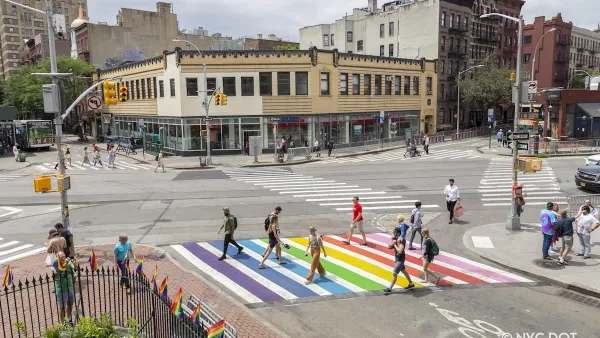The more you drive, says a new study, the more you are at risk of getting in an accident. So if how much one pays for car insurance was linked to mileage, there would be a significant reduction in driving - and fender benders.
The study was funded by the Conservation Law Foundation. From the introduction to the study, which was based in Massachusetts:
"The Conservation Law Foundation (CLF) and the Environmental Insurance Agency commissioned a study
to assess the risk‐mileage relationship using actual insurance claims information in Massachusetts. This
study ("Ferreira and Minikel 2010") offers the largest disaggregated analysis to date of the risk‐mileage
relationship and the actuarial basis for PAYD. The work analyzes data on $502 million worth of claims on
almost 3 million cars driven an aggregate of 34 billion miles. The study confirms the statistical
soundness of pay‐as‐you‐drive auto insurance pricing and indicates that the PAYD approach would result
in significant reductions in miles driven, green house gas emissions, and auto accident losses without
adverse equity impacts to drivers."
One interesting part of their proposal in regards to planners is the suggestion to charge suburban and rural car owners less per mile than urban car owners.
The full study can be downloaded directly here.
Thanks to Todd Litman
FULL STORY: Pay-As-You-Drive Auto Insurance (PAYD)

Planetizen Federal Action Tracker
A weekly monitor of how Trump’s orders and actions are impacting planners and planning in America.

Chicago’s Ghost Rails
Just beneath the surface of the modern city lie the remnants of its expansive early 20th-century streetcar system.

Amtrak Cutting Jobs, Funding to High-Speed Rail
The agency plans to cut 10 percent of its workforce and has confirmed it will not fund new high-speed rail projects.

Ohio Forces Data Centers to Prepay for Power
Utilities are calling on states to hold data center operators responsible for new energy demands to prevent leaving consumers on the hook for their bills.

MARTA CEO Steps Down Amid Citizenship Concerns
MARTA’s board announced Thursday that its chief, who is from Canada, is resigning due to questions about his immigration status.

Silicon Valley ‘Bike Superhighway’ Awarded $14M State Grant
A Caltrans grant brings the 10-mile Central Bikeway project connecting Santa Clara and East San Jose closer to fruition.
Urban Design for Planners 1: Software Tools
This six-course series explores essential urban design concepts using open source software and equips planners with the tools they need to participate fully in the urban design process.
Planning for Universal Design
Learn the tools for implementing Universal Design in planning regulations.
Caltrans
City of Fort Worth
Mpact (founded as Rail~Volution)
City of Camden Redevelopment Agency
City of Astoria
City of Portland
City of Laramie





























